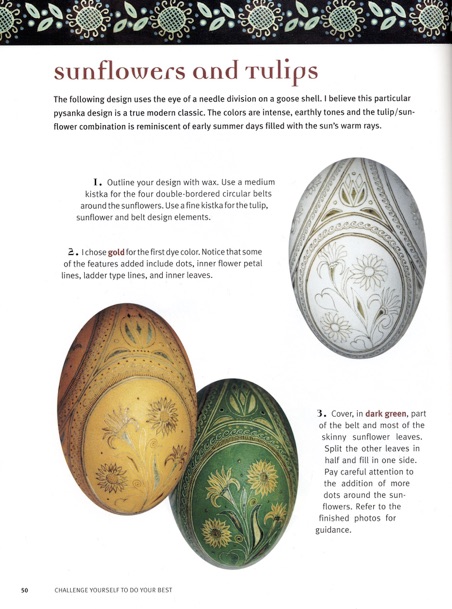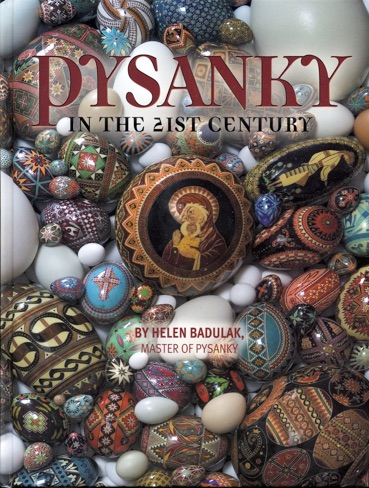
Pysanky in the 21st Century
Author: Helen Badulak
Edition: 1st
Format: Large format hardcover
Pages: 240
Language: English
Illustrations: Numerous color
Publisher: Kutztown Publishing Company (Kutztown, PA, 2004)
Availability: Yes (Amazon, others)
Acquired: Polish Art Center
ISBN: 78-0911122107
Helen Badulak is a well-known East Coast pysanka artist, and has worked with the IEAG (International Egg Art Guild) to create a master’s category for artists like herself. This book showcases her work and her life.
It is a big, heavy book, and, although it does contain much practical information, for me it has always been more of a coffee table book, eye candy rather than instructional text.
The book is divided into three sections. The first is a description of Helen’s techniques, with tips and pointers to other pysanka artists. There is useful information here, and I did learn a few things myself (e.g. the use of Viva towels and Scotch-Brite pads in pysankarstvo). She has a helpful chart of various types of eggs and their properties. But this is not a book for beginners; those looking for a basic pysanka primer should instead buy a copy of one of the UGS books.

Helen Badulak’s pysankarstvo tools and unfinished ostrich egg pysanka
Helen also includes several step-by-step series of photographs of her pysanky. While this may seem like a good idea in theory, in practice it is not. The eggs she uses as examples are big ones (goose, ostrich) and she shows only the waxing. There is no information on how to create this division (i.e. penciling work), which, in the case of this version (below) of the sakvy division is quite difficult.

It is also up to the reader to try and figure out what has been waxed in from one color to the next. On a small chicken egg this may be reasonable, on a large egg, such as the goose egg above, it is quite difficult. This is why so many other books use line drawings, hand drawn or computer-generated, to illustrate this.
The second part of her book is a series of photos of her work. There is page after page of her exquisite pysanky. They are meant to be admired rather than copied. The detail can be hard to make out, especially in some of the older photos, and often not enough or the egg can be seen to replicate it.

Helen Badulak’s pysanky on a bed of quail eggs.
The third section is a biography of Helen, and includes photos of her, and of her family. We learn of her youth in the DP camps, of her coming to America, of her marriage and her love of pysanky.
In short, this is a big glossy book of pretty pysanky. It is nice to have if you want to look at eggs, and you might pick up a few tips and tricks. It is not a book for beginners.
Back to MAIN Pysanka Books home page.
Back to MAIN Books home page.
Back to Pysanka Bibliography.
Search my site with Google



